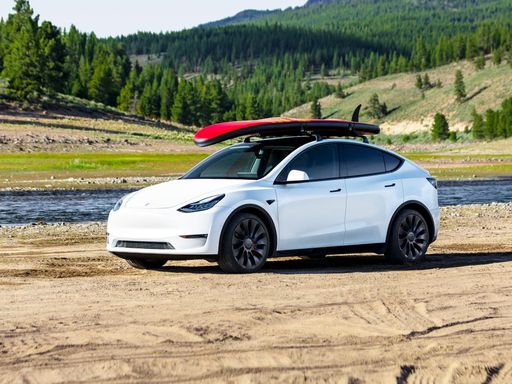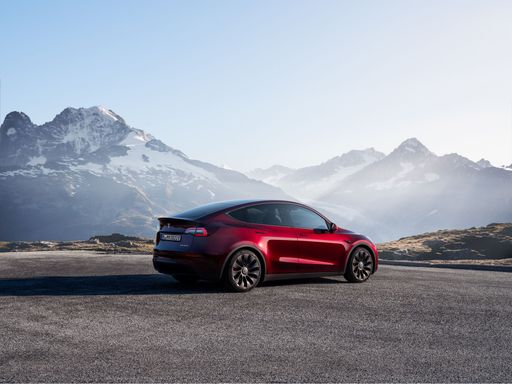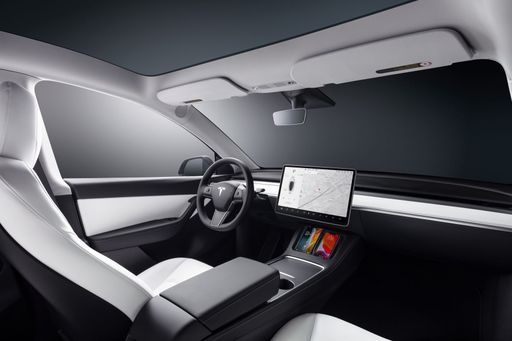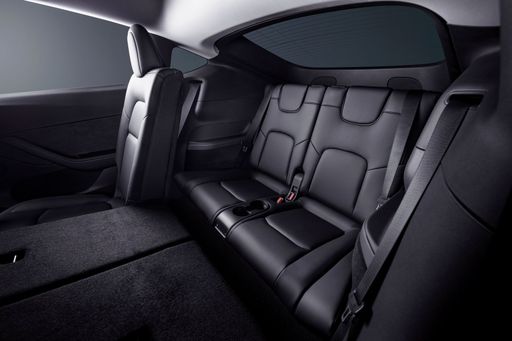Tesla Model Y vs ZEEKR 7X - Unterschiede & Preise im Vergleich
Vergleiche Leistung (627 PS vs 646 PS), Kofferraum und den Preis (40000 € vs 53000 €) auf einen Blick. Finde jetzt heraus, welches Auto für dich die bessere Wahl ist, Tesla Model Y oder ZEEKR 7X?
Kosten und Verbrauch:
Beim Thema Wirtschaftlichkeit zeigen sich spannende Unterschiede zwischen beiden Modellen.
Tesla Model Y ist beim Preis merklich im Vorteil – er startet bereits ab 40000 €, während der ZEEKR 7X mit 53000 € etwas teurer ist. Das entspricht einem Preisunterschied von rund 13000 €.
Beim Stromverbrauch liegt der Vorteil beim Tesla Model Y: Mit 13.10 kWh pro 100 km ist er deutlich wahrnehmbar effizienter als der ZEEKR 7X mit 17.70 kWh. Das sind rund 4.60 kWh Unterschied.
In Sachen Reichweite kann der Tesla Model Y kaum spürbar mehr überzeugen: Er schafft bis zu 622 km, also etwa 7 km mehr als der ZEEKR 7X.
Motor und Leistung:
Unter der Haube zeigt sich, welches Modell sportlicher ausgelegt ist und wer beim Duell die Nase vorn hat.
Bei der Motorleistung hat der ZEEKR 7X minimal einen Vorteil – mit 646 PS statt 627 PS. Das entspricht einem Leistungsplus von rund 19 PS.
In der Beschleunigung von 0 auf 100 km/h hat der Tesla Model Y nur leicht die Nase vorn – er schafft den Sprint in 3.50 s, während der ZEEKR 7X 3.80 s benötigt. Damit ist er rund 0.30 s schneller.
Bei der Höchstgeschwindigkeit liegt der Tesla Model Y ein Stück weit vorn – er erreicht 250 km/h, während der ZEEKR 7X bei 210 km/h endet. Der Unterschied beträgt etwa 40 km/h.
Auch beim Drehmoment zeigt sich ein Unterschied: ZEEKR 7X zieht merklich kräftiger durch und bietet 710 Nm statt 493 Nm. Das macht rund 217 Nm Unterschied.
Platz und Alltagstauglichkeit:
Ob Familienauto oder Alltagsbegleiter – wer bietet mehr Platz, mehr Flexibilität und mehr Komfort?
Sitzplätze: bietet mehr Sitzmöglichkeiten – vs .
Beim Leergewicht zeigt sich Tesla Model Y deutlich wahrnehmbar leichter – 1976 kg im Vergleich zu 2395 kg. Der Gewichtsunterschied liegt bei rund 419 kg.
Beim Kofferraumvolumen hat der Tesla Model Y merklich mehr Platz – 822 L gegenüber 539 L. Das sind rund 283 L Unterschied.
Auch bei der Zuladung hat ZEEKR 7X nur leicht das Rennen gewonnen – 485 kg gegenüber 472 kg. Das ergibt einen Unterschied von rund 13 kg.
Wer gewinnt das Rennen?
Der Tesla Model Y gewinnt das Duell deutlich und ist somit unser DriveDuel Champion!
Tesla Model Y ist der bessere Allrounder in diesem Vergleich.
 @ Tesla, Inc.
@ Tesla, Inc.
Tesla Model Y
Kosten und Verbrauch
Detailauswertung ansehen
Motor und Leistung
Detailauswertung ansehen
Maße und Karosserie
Detailauswertung ansehen
Tesla Model Y
Das Tesla Model Y ist ein praktisch veranlagter Elektro-SUV, der mit großzügigem Platzangebot, minimalistischer Innenraumgestaltung und einer Prise Zukunftsflair den Alltag merklich entspannter macht. Wer ein pragmatisches, aber dennoch dynamisch auftretendes Familienauto mit einem Augenzwinkern sucht, findet hier eine sehr taugliche Lösung.
Details @ Tesla, Inc.
@ Tesla, Inc.
 @ Tesla, Inc.
@ Tesla, Inc.
 @ Tesla, Inc.
@ Tesla, Inc.
 @ Tesla, Inc.
@ Tesla, Inc.
ZEEKR 7X
Der Zeekr 7X wirkt wie ein eleganter Allrounder, der moderne Elektro-Ästhetik mit praktischer Alltagstauglichkeit verbindet. Mit reichlich Komfort, klarer digitaler Bedienung und einem Fahrgefühl, das Laune macht, ist er eine überzeugende Wahl für Käufer, die weder auf Stil noch auf Nutzwert verzichten möchten.
Details
 @ Tesla, Inc.
@ Tesla, Inc.
|
|
|
|
|
Kosten und Verbrauch |
|
|---|---|
|
Preis
40000 - 62000 €
|
Preis
53000 - 63000 €
|
|
Verbrauch L/100km
-
|
Verbrauch L/100km
-
|
|
Verbrauch kWh/100km
13.1 - 16.2 kWh
|
Verbrauch kWh/100km
17.7 - 19.9 kWh
|
|
Elektrische Reichweite
534 - 622 km
|
Elektrische Reichweite
480 - 615 km
|
|
Batteriekapazität
64.5 - 85 kWh
|
Batteriekapazität
-
|
|
co2
0 g/km
|
co2
0 g/km
|
|
Tankgröße
-
|
Tankgröße
-
|
Maße und Karosserie |
|
|---|---|
|
Karosserie
SUV
|
Karosserie
SUV
|
|
Sitze
5
|
Sitze
5
|
|
Türen
5
|
Türen
5
|
|
Leergewicht
1976 - 2108 kg
|
Leergewicht
2395 - 2535 kg
|
|
Kofferraum
822 L
|
Kofferraum
539 L
|
|
Länge
4790 - 4797 mm
|
Länge
4787 mm
|
|
Breite
1921 mm
|
Breite
1930 mm
|
|
Höhe
1611 - 1624 mm
|
Höhe
1650 mm
|
|
Kofferraum maximal
2022 - 2138 L
|
Kofferraum maximal
-
|
|
Zuladung
440 - 472 kg
|
Zuladung
455 - 485 kg
|
Motor und Leistung |
|
|---|---|
|
Motorart
Elektro
|
Motorart
Elektro
|
|
Getriebe
Automatik
|
Getriebe
Automatik
|
|
Getriebe Detail
Reduktionsgetriebe
|
Getriebe Detail
Reduktionsgetriebe
|
|
Antriebsart
Allrad, Heckantrieb
|
Antriebsart
Heckantrieb, Allrad
|
|
Leistung PS
299 - 627 PS
|
Leistung PS
421 - 646 PS
|
|
Beschleunigung 0-100km/h
3.5 - 7.2 s
|
Beschleunigung 0-100km/h
3.8 - 6 s
|
|
max. Geschwindigkeit
201 - 250 km/h
|
max. Geschwindigkeit
210 km/h
|
|
Drehmoment
420 - 493 Nm
|
Drehmoment
440 - 710 Nm
|
|
Anzahl Zylinder
-
|
Anzahl Zylinder
-
|
|
Leistung kW
220 - 461 kW
|
Leistung kW
310 - 475 kW
|
|
Hubraum
-
|
Hubraum
-
|
Allgemein |
|
|---|---|
|
Modelljahr
2025
|
Modelljahr
2025
|
|
CO2-Effizienzklasse
A
|
CO2-Effizienzklasse
A
|
|
Marke
Tesla
|
Marke
ZEEKR
|
Gibt es den Tesla Model Y mit verschiedenen Antrieben?
Angeboten wird der Tesla Model Y mit Allrad oder Heckantrieb.
Die angezeigten Preise und Daten sind Schätzungen, die auf deutschen Listenpreisen basieren, und können je nach Land variieren. Diese Informationen sind rechtlich nicht bindend.
